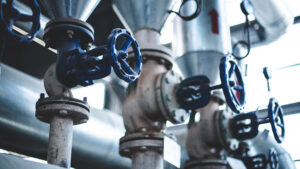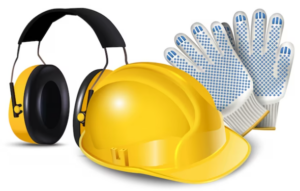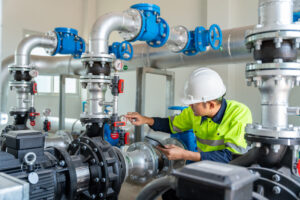It’s no secret that construction and plumbing jobs are considered dangerous. That’s because most people working in these sectors are frequently exposed to harmful and hazardous materials. So, workplace safety should be a top priority for plumbers facing unique risks.
Why Safety is Important
As a plumber, you’re often working in dangerous environments. Without proper safety care, this can lead to accidents, causing significant harm to people and property. Thus, prioritizing on-job safety is vital to avoid such challenges.
Best Practices for NYC Plumbers
Here are a few safety first best practices for NYC plumbers to follow:
Proper Training and Certification
Before any work can be done, The NYC Department of Buildings requires all plumbers to be registered and licensed. Upon being registered and licensed, The Department issues Licensed Master Plumber (LMP) licenses to Contractors qualified to perform the necessary work, including plumbing, standpipe, and sprinkler work, specifically for systems with less than 30 heads. Additionally, to be qualified to become an LMP, one must have a place of business in NYC rather than a home office. According to the regulations, plumbers must complete an approved training program, such as the OSHA course. This program covers general industry safety practices and health hazards. Training and knowledge are essential to ensure the safe and lawful execution of the job.

Follow Plumbing Codes and Standards
Following plumbing codes and standards is one way of ensuring the best practices for NYC plumbers to ensure job site safety. The New York City Department of Buildings outlines the procedures and techniques to follow in the plumbing environment.
Also, The International Plumbing Code (IPC) defines the essential requirements for plumbing system functionality and design. It establishes rules for integrating new plumbing technologies. Following these codes can help plumbers prevent accidents and enhance workplace safety.
Use Appropriate Safety Gear
Personal protective equipment (PPE) is one of the essential best practices for NYC plumbers working on job sites. Depending on the work environment, plumbers may need different safety gear. Here are some safety first PPE equipment that plumbers should wear:

-
- Safety glasses or goggles
- Safety boots or shoes with slip-resistant soles
- Earplugs or earmuffs
- Respirators
- Gloves
Knee pads and hard hats are required for commercial plumbers, for use in construction sites, or potentially tight spaces, such as crawlspaces, low basements, and attics. Additionally, plumbers are required to wear yellow hard hats when on the job.
Using the appropriate plumbing tools and equipment is an essential best practice. Plumbers should ensure that all their instruments are suitable for the job and in good working condition.
Thankfully, using the manufacturer’s instructions when operating tools can help prevent accidents and property damage. Also, proper tool maintenance is essential to avoid injuries on job sites. Selecting the appropriate plumbing gadget not only helps to prevent injuries but also saves time and money.

Follow Electrical Safety Rules
Many plumbers are exposed to electrically powered systems. That’s why electrical safety is an essential aspect of workplace safety. With proper training, plumbers can avoid touching electrical components. Instead, they should ensure their tools are properly grounded to avoid electrocution while working in wet conditions.
In addition, plumbers should follow electrical safety regulations to reduce electrical hazards and prevent dangerous incidents. These rules include following proper engineering controls and using PPE. They should also develop the necessary installation and maintenance skills for electrical components and equipment.
Follow Proper Lifting Techniques
Proper lifting tactics are essential for NYC plumbers for job site safety. Using improper techniques when lifting heavy objects can lead to severe damage to the back muscles and spine, resulting in chronic pain. Before lifting heavy items, plumbers must assess the object’s weight to know if it’s safe to raise it alone or ask for help. Also, plumbers can avoid back injuries and strains by wearing appropriate personal protective equipment, such as back braces.
Secure the Work Area
The work area has to be secure to guarantee the safety of plumbers and anyone near it. Before starting any job, plumbers should identify hazards such as sharp objects or uneven surfaces. Storing unused tools, equipment, or other items in a secure location is essential to avoid any potential accidents. Furthermore, using warning signs helps to alert others of possible risks and secure the work area. The signs should be easily noticeable and positioned to maximize visibility. This measure can help to avoid accidents and injuries resulting from people unintentionally entering the work area. Also, barricades and caution tape can be used if the work area is public, like a busy street or sidewalk. Use caution tape to mark the boundary to separate the work area from the surrounding area.
Follow Emergency Procedures
Plumbers should follow the correct emergency procedures, such as a fire or gas leak. This entails planning to leave the job site and knowing where fire extinguishers and other safety equipment are located. Also, they should familiarize themselves with the fuel gas code showing how to install, maintain, and repair fuel gas systems.
Conclusion
In the plumbing industry, safety procedures and best practices help to lower the possibility of mishaps and workplace injuries. Plumbing professionals in New York City should pay attention to it. By following these guidelines, you can guarantee a safe and risk-free workplace.
Contact Us today to learn more about proper safety equipment and best practices.

